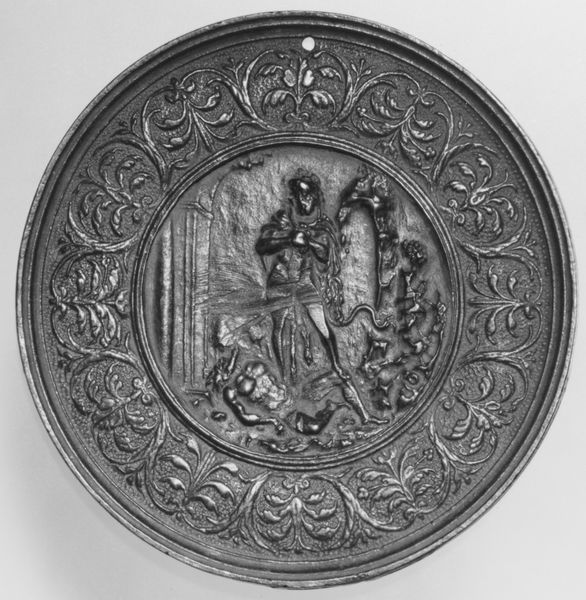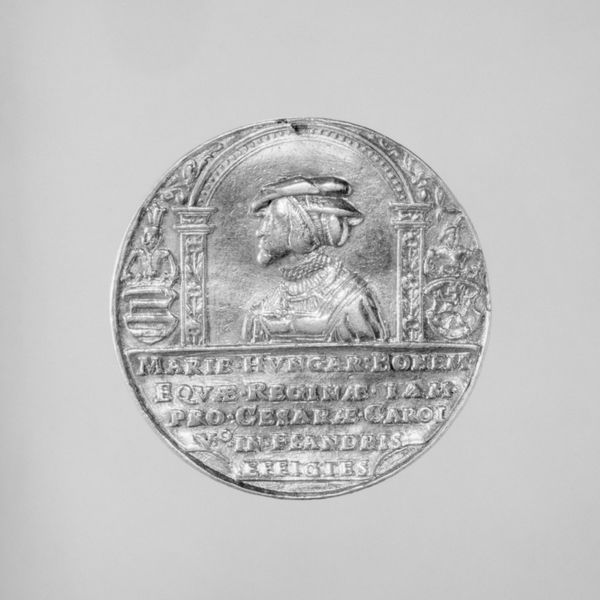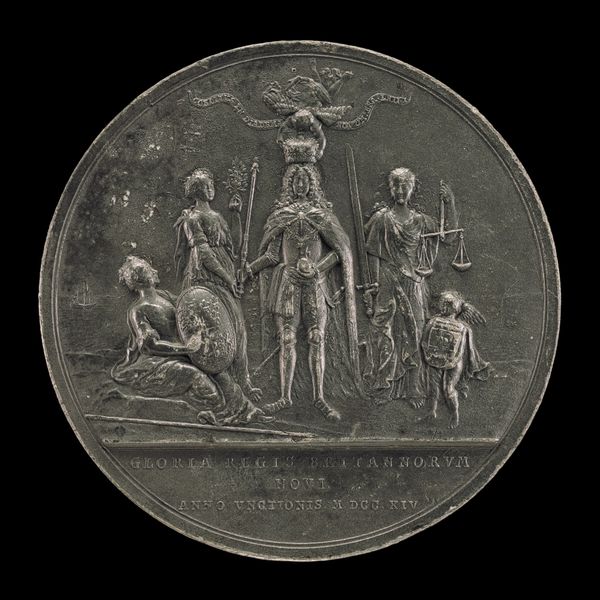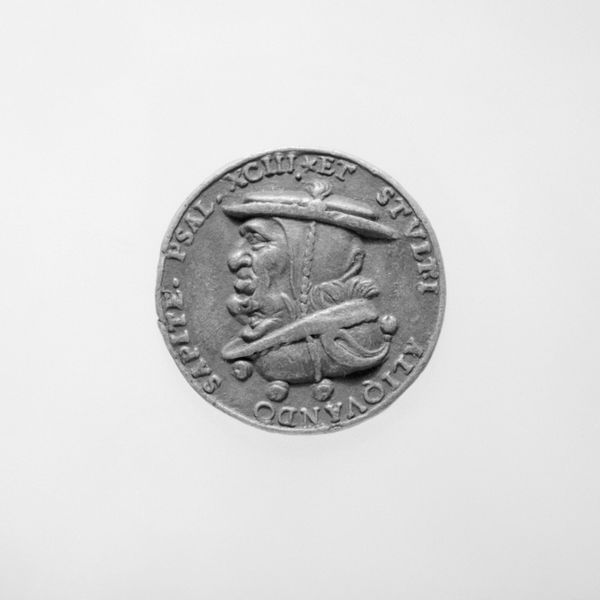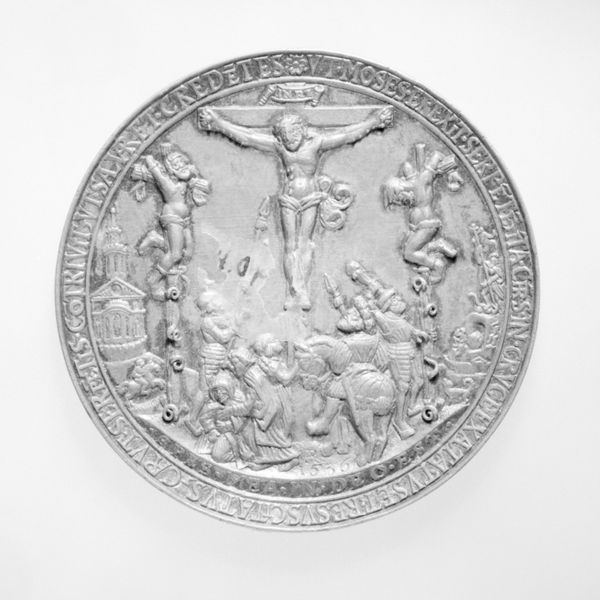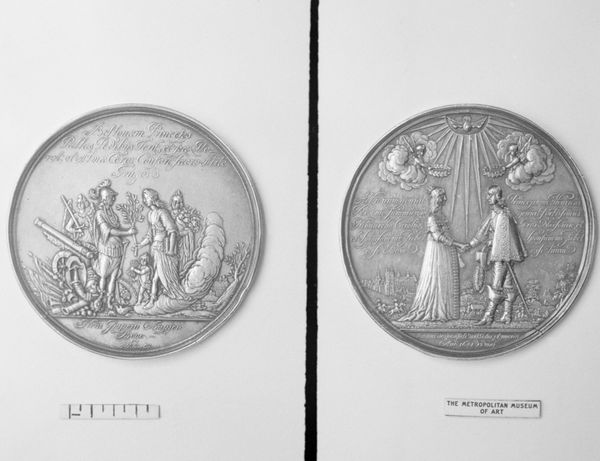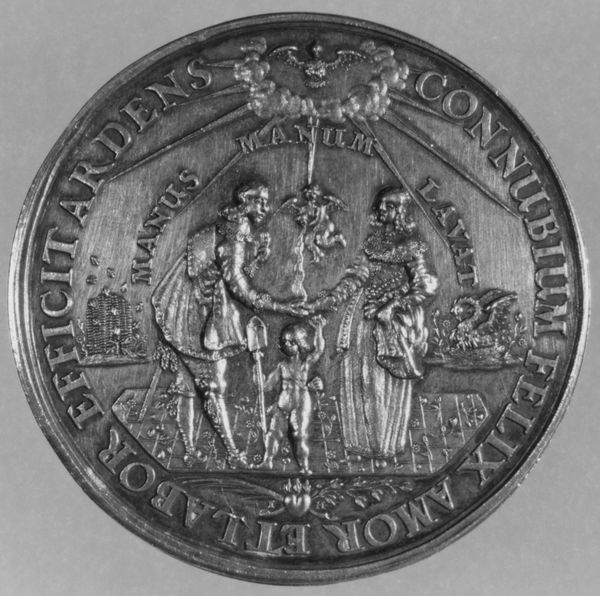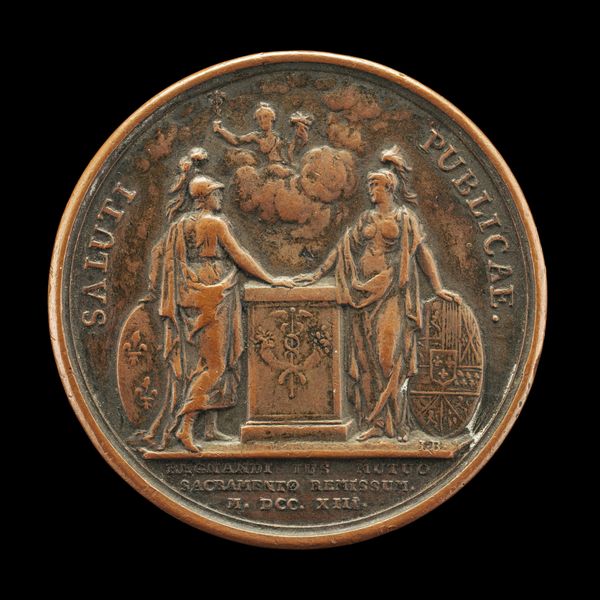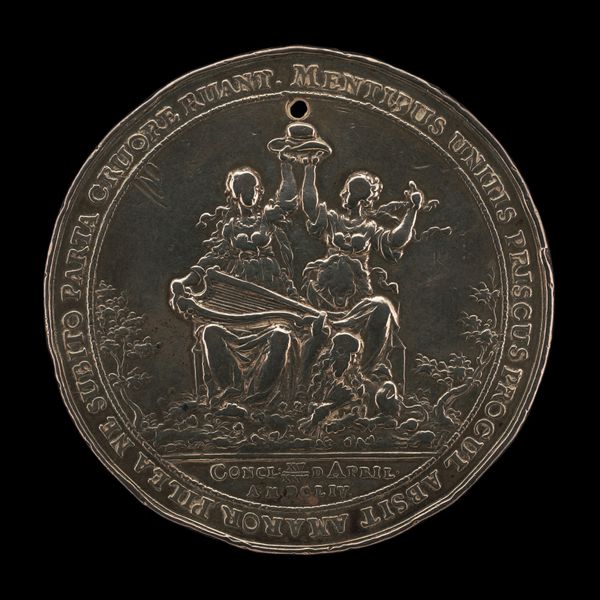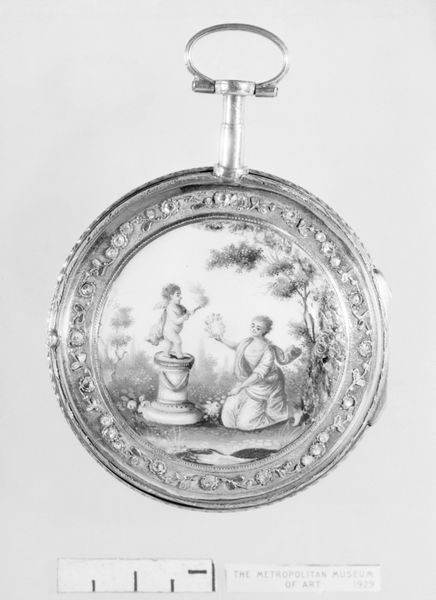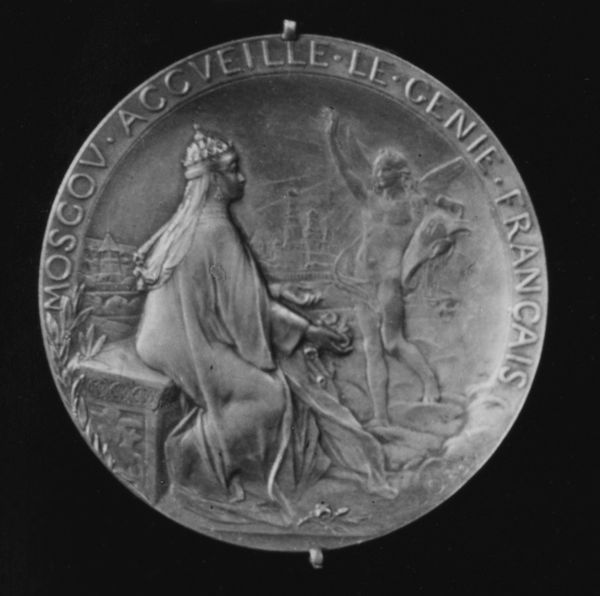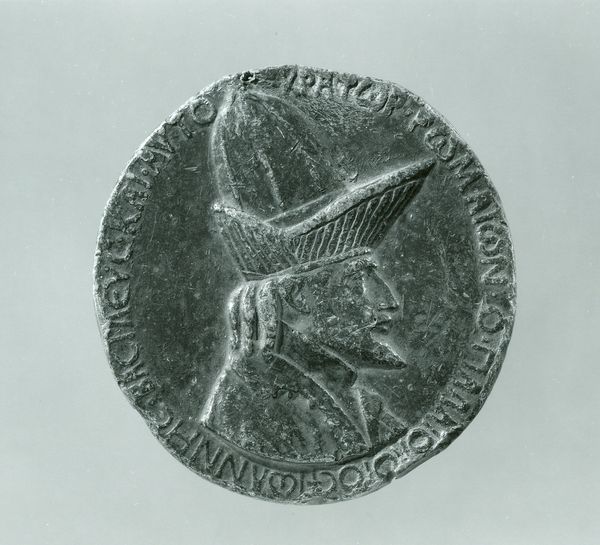
Commemorating the visit of the Seventh Regiment and the Veteran Corps, N.G.S N.Y. to the Centennial Exhibition of 1876 1876
0:00
0:00
relief, bronze, sculpture
#
relief
#
bronze
#
soldier
#
sculpture
#
history-painting
#
decorative-art
Copyright: Public Domain
Curator: Let's discuss this bronze relief from 1876 by S.C. Demarest, currently residing at the Met. Its full title is rather a mouthful: "Commemorating the visit of the Seventh Regiment and the Veteran Corps, N.G.S N.Y. to the Centennial Exhibition of 1876". Editor: Right, my first impression? A rather stiff souvenir, though it definitely has that late 19th-century decorative art feel. It makes me think of military bands and hot summer days. Curator: Note how the relief is more than just decorative; it documents a very specific historical event. Consider the economic context—these commemorations were often commissioned for social elites. What was the financial exchange between the Veteran Corps, Demarest, and the bronze casting company? I wonder about the power dynamics involved in that network. Editor: True, it feels like a memento for those who could afford it. Yet, I see an honest attempt to capture a moment. Look at the rendering of the soldier’s uniform; it’s meticulous. It’s not just celebrating power, it's also acknowledging labor—the soldier’s service. It’s almost naive in its earnestness. And the attempt at neoclassicism with that little bust sitting on a pedestal, slightly comical somehow. Curator: Exactly, but who decided what was being memorialized and how? This choice is indicative of what's valued by the social structures of the period. And how does this specific sculptural design further legitimizes notions of state power and national identity? The medium is never neutral. Bronze as a material communicates status and endurance, directly tied to militaristic symbolism. Editor: Well, and maybe also personal pride? I like to imagine the veterans receiving these and displaying them, like, on their mantles at home. A tactile connection to the events they'd witnessed. I think it humanizes the whole event somehow. Curator: Yes, your view makes me rethink the notion of accessibility, both economically and emotionally. Maybe the impact of this commemorative artwork resided more in the sentimental value assigned by veterans than I initially thought. Editor: Precisely. And for me, even though these objects reflect particular values, art has this peculiar magic. It gets repurposed as years roll by, allowing people like us to give our interpretations from a different era.
Comments
No comments
Be the first to comment and join the conversation on the ultimate creative platform.

